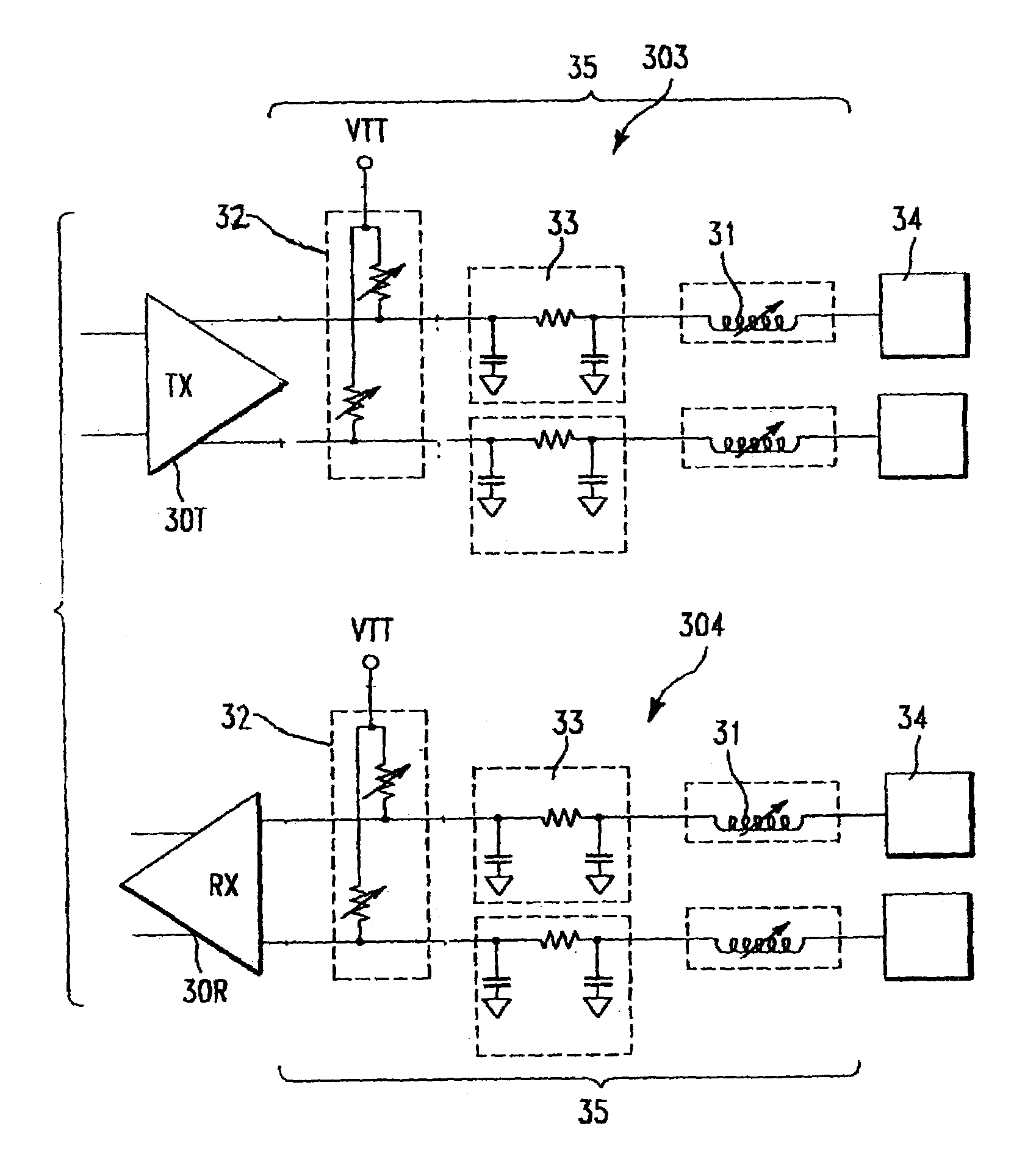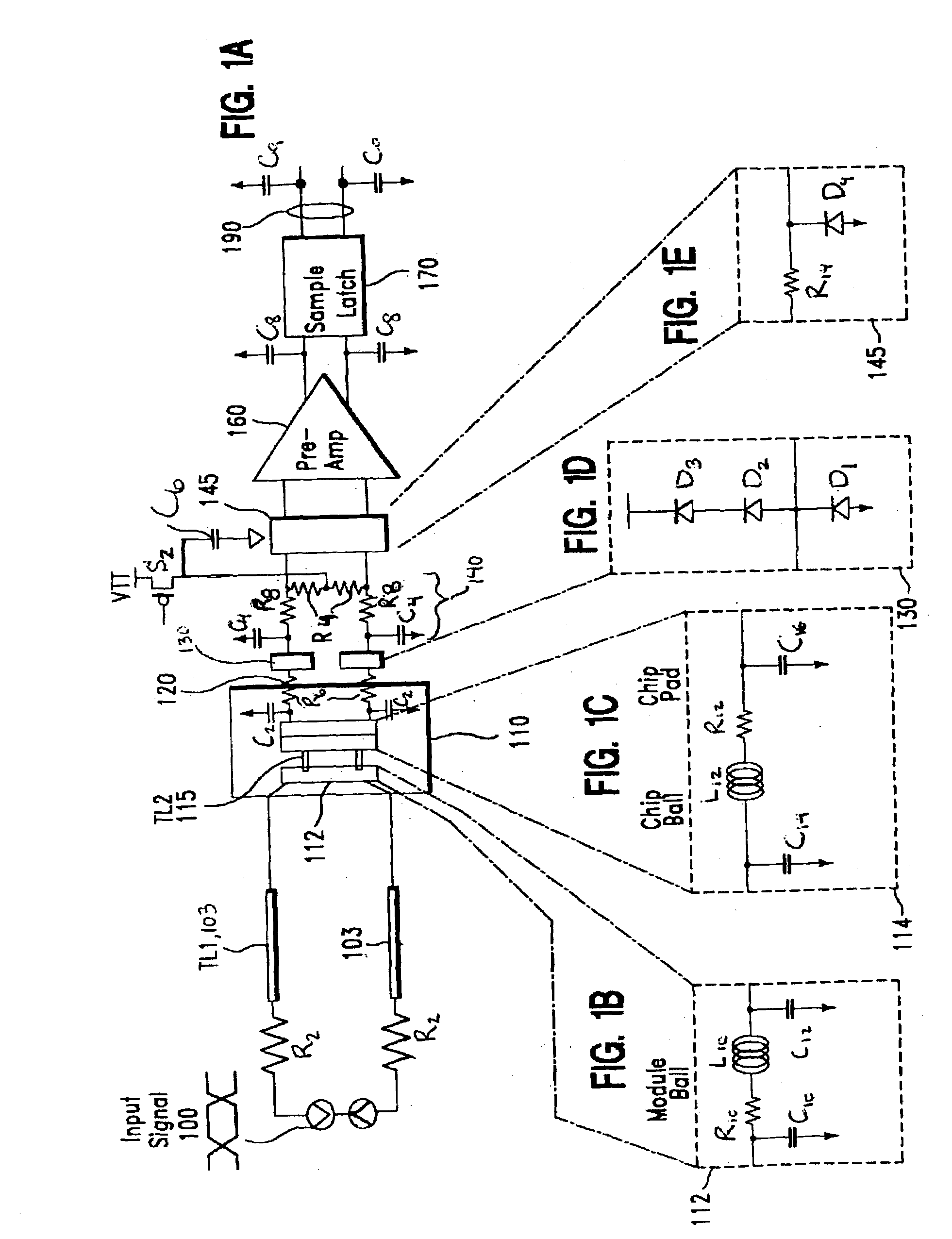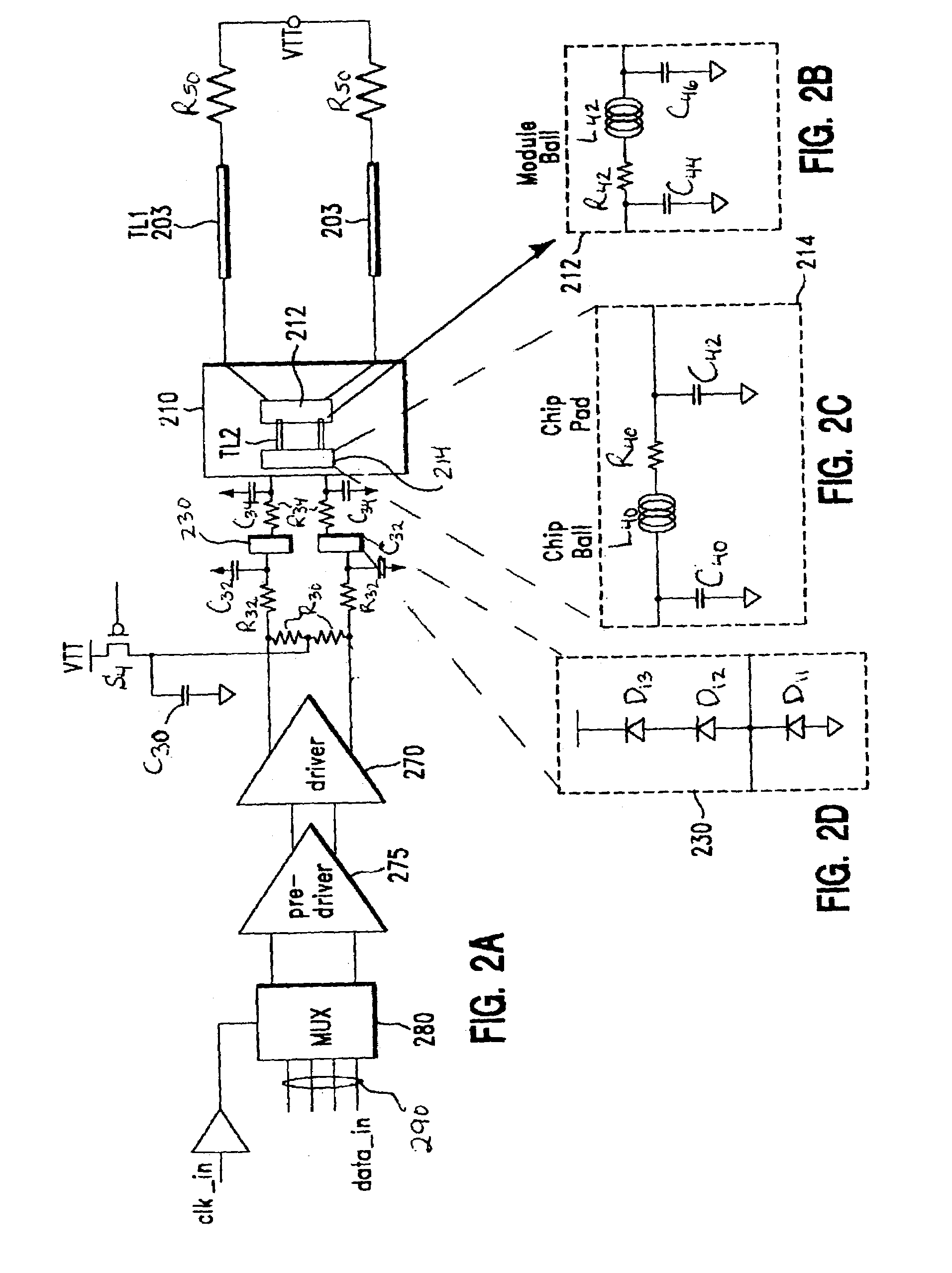Programmable impedance matching circuit and method
a technology of impedance matching and circuit, applied in waveguide devices, antennas, electrically long antennas, etc., can solve problems such as interference, impedance mismatch, jitter noise, etc., to improve signal integrity and improve signal integrity
- Summary
- Abstract
- Description
- Claims
- Application Information
AI Technical Summary
Benefits of technology
Problems solved by technology
Method used
Image
Examples
Embodiment Construction
[0031]In systems including many active electronic components, signals are transmitted from a transmitter formed on one chip or component to a receiver formed on another chip or component through transmission lines that connect the two chips or components. FIGS. 1A and 2A respectively illustrate such receiver and transmitter, modeled as networks. It is important to study the structure of such networks, in order to understand the source of signal reflections, since the invention provides ways of reducing impedance mismatches and reflections.
[0032]In the receiver network of FIG. 1A, a differential signal 100 having true and complementary signals is coupled through a pair of source resistors R2 to a pair of transmission lines (TL1) 103, each having a characteristic impedance Z0. Each transmission line (TL1) 103, in turn, is coupled to the receiver through a package 110, e.g. a ball grid array package, which includes a module ball 112, for which a circuit equivalent is shown in FIG. 1B m...
PUM
 Login to View More
Login to View More Abstract
Description
Claims
Application Information
 Login to View More
Login to View More - R&D
- Intellectual Property
- Life Sciences
- Materials
- Tech Scout
- Unparalleled Data Quality
- Higher Quality Content
- 60% Fewer Hallucinations
Browse by: Latest US Patents, China's latest patents, Technical Efficacy Thesaurus, Application Domain, Technology Topic, Popular Technical Reports.
© 2025 PatSnap. All rights reserved.Legal|Privacy policy|Modern Slavery Act Transparency Statement|Sitemap|About US| Contact US: help@patsnap.com



